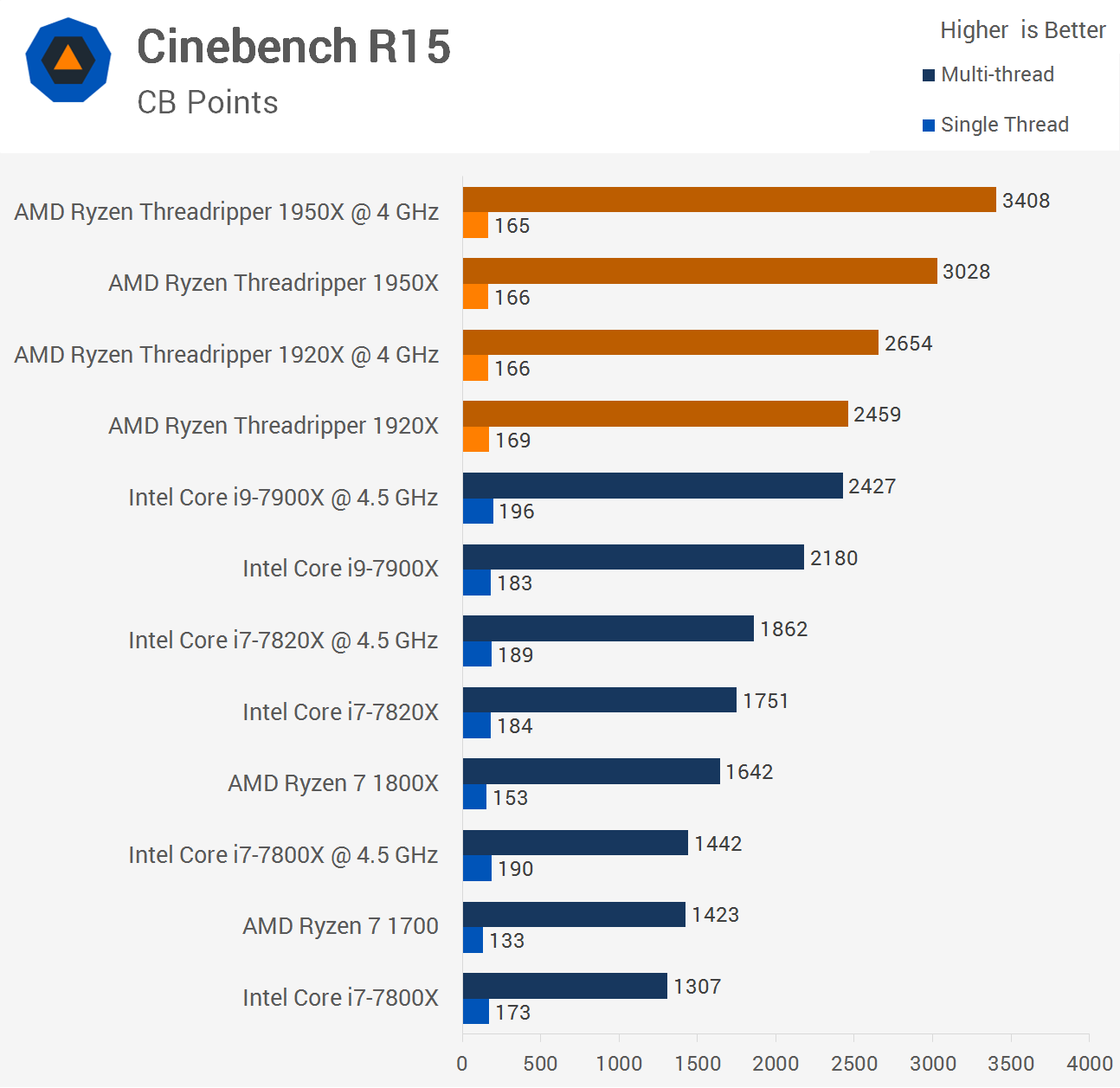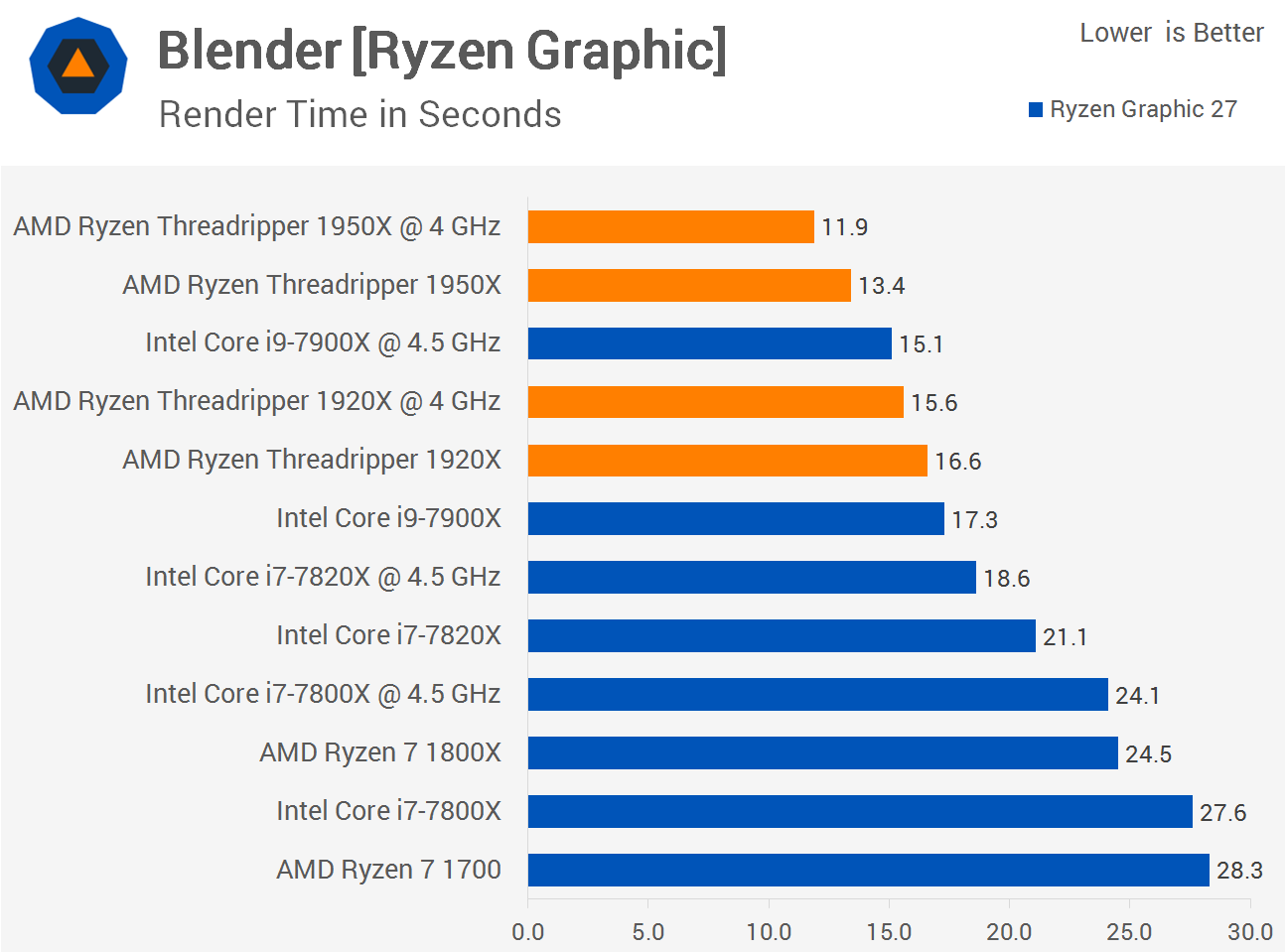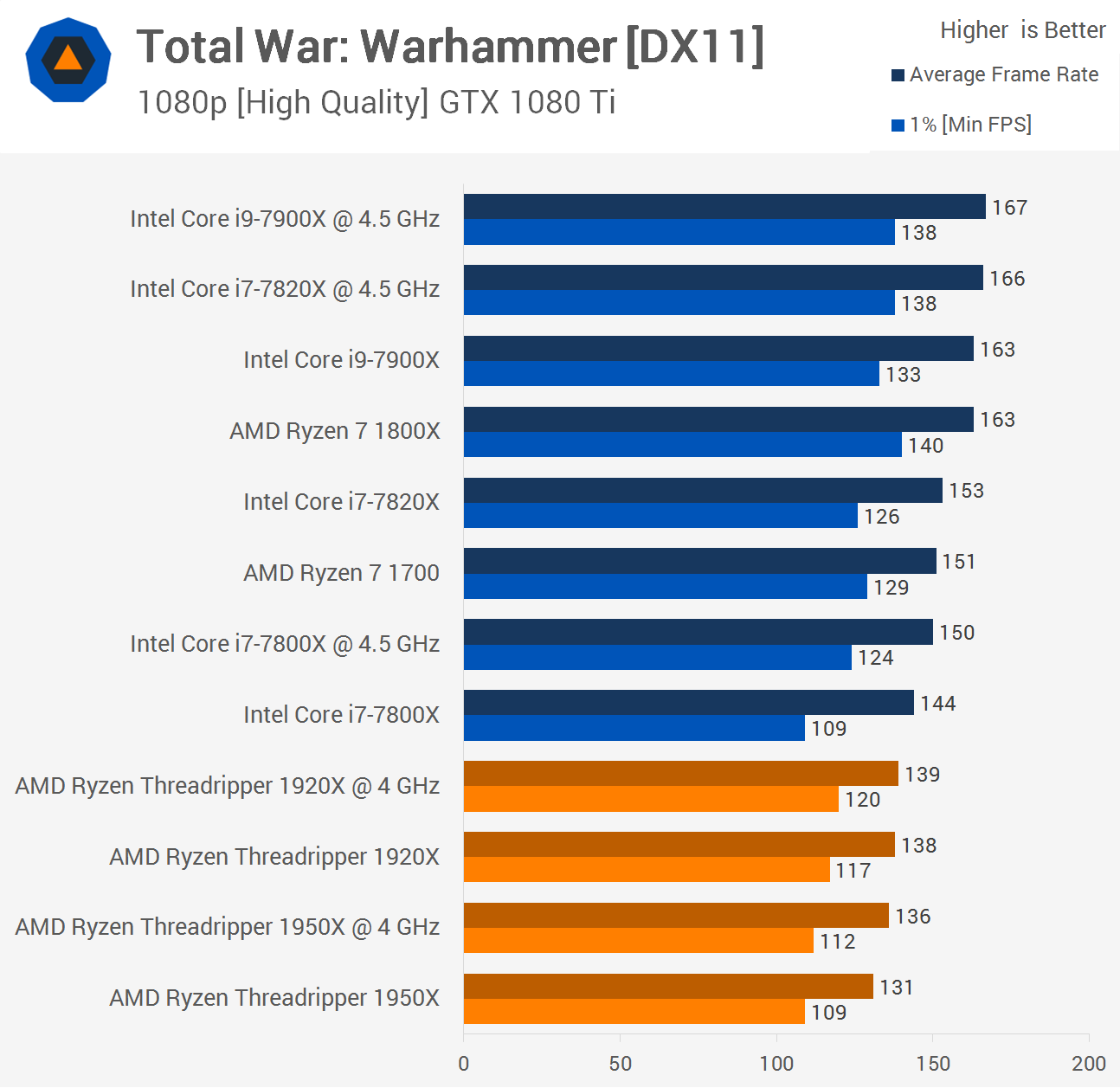Overclocking Results
As expected the Threadripper CPUs were able to hit 4 GHz but unfortunately like Ryzen 7 weren't able to go beyond that point. Extreme voltages might see you hit 4.1 - 4.2 GHz like what we've seen with some Ryzen CPUs but for 24/7 usage 4 GHz looks to be the limit.

Anyway at 4 GHz the 1950X spat out an incredible score of 3408 pts in Cinebench though due to the way XFR works this overclock actually slightly reduced the single thread performance. You could probably fine tune the overclock to avoid this but with time against us we didn't play around with the overclocking too much.

Overclocked the Blender render time for the 1950X was cut down by an impressive 11% while the 1920X time was reduced by 6%. This means even overclocked the Core i9-7900X wasn't much faster than the 1920X and wasn't able to match the stock 1950X in this application.

Interestingly this time when testing with Corona the 1920X saw a massive 17% performance improvement when overclocked while the 1950X was just 7% faster. This meant both overclocked Threadripper parts were much faster than the overclocked 7900X.

Back to the kind of margins seen in Blender we find that while the 1950X was 9% faster overclocked the 1920X was just 5% faster. This meant when testing with Premiere Pro CC the 1920X did trail the Core i9-7900X while the 1950X was quite a lot faster.

Overclocking performance in Warhammer was tested using Uniform Memory Access and here the overclocks did little to boost performance.

Finally we have the overclocking power consumption figures and here Threadripper looks quite good, especially in relation to the Core i7-7900X. Whereas the Intel CPU pushed total system consumption to 388 watts, the 1950X hit 358 watts, an 8% reduction for what was often between 20 - 30% more performance.
